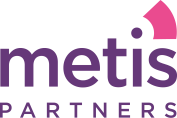Look Inwards
It may sound counterintuitive but the most efficient way to build an effective intellectual property (IP) portfolio is to first look inwards – look at your brands, trade secrets, patents, software, data & analytics, etc. Create an inventory of these existing key IP assets and focus on the IP that is critical to your business. If it is not immediately clear what is ‘key’ then do some mapping – from your material revenue streams – to your products and services – and then to the intellectual property assets that underpin these products and services. Making this link will help you identify the intellectual property assets that currently underpin your main cash flows and likely secure your competitive advantage.

As a result of this review there could be bunch of IP assets, maybe patents or trademarks which are fading in importance. Any intellectual property that is not key, ask yourself: Will I use it in the future? Do I want to continue to incur the costs of maintenance and registration? Could I sell or license this intellectual property? The pruning has begun.
Now you have visibility over the intellectual property you are currently relying on, look at your business forecasts and plans for future growth. Will you rely on all the same IP assets? Do you have all the IP that you need? Are there any gaps that need filled or risks that need to be managed and can you confidently identify any intellectual property assets that could be added to your competitive moat.
Look Outwards
This is the time to look outwards at the competitive landscape and focus on what you want to include in your future intellectual property portfolio. What IP do you need to position yourself in the market? What IP will help you capture and protect market share? Consider gaps in your intellectual property portfolio and how they could be filled. Can you buy or create the IP, or if you don’t have the budget, can you license-in directly or through a patent-buying programs? There are many programs available, including country specific programs, such as Canada’s Innovation Asset Collective (‘IAC’).
Research is critical – gather data, analyse and build your market intelligence. There are lots of tools you can use to both scan the market and track your competitors’ intellectual property position and activities. Can you piece together a competitor or new entrant’s IP strategy? Look at their filings, their website, their publications and even their marketing materials, which will help to better understand their IP strategy and so inform your own IP strategy in response.
Look Beyond
Once you have a pruned intellectual property portfolio, you can focus efforts and financial resource on protecting and managing the IP that is critical to your business with the confidence that you have scoped the competitive landscape and know what gives you a competitive advantage. This process is efficient and effective irrespective of your size and scale. No business can afford to incur unnecessary costs and IP portfolio pruning should be part of ongoing IP management whether you a large patent-rich business or a small software or tech business. So, what’s next?
Maybe it’s time to get out to the market and confidently tell people about your business, your strategy and that you have developed an IP portfolio that will withstand diligence and that can protect your future cash flows. You can get on the radar of investors and other bigger market participants, perhaps by joining platforms like the IP100 or the IAC. Platforms like this can help give you visibility in the market and can even benchmark your IP portfolio against other operators in the market.
You might consider having an intellectual property valuation completed as you can now demonstrate the IP that underpins your future cash flows and could be viewed as viable collateral, which could be of particular interest to investors, lenders and buyers, like Private Equity. M&A buyers that emerge will probably know you already from their “Looking Out” and tracking of the IP universe. Knowing the value of your critical IP assets and being confident about the IP you own and how it is used in your business to create competitive advantage, will help ensure you achieve the recognition and return for the investment you have made in this IP. You could find you are in a stronger negotiating position by demonstrating you have an effective IP strategy and a confident IP narrative.
Intellectual property strategy
Look INWARDS: pruning and rebalancing the IP portfolio to achieve maximum impact for budget starts by assessing what you have in your armoury and what you might need for future strategy.
Look OUTWARDS: your IP strategy is constantly evolving and can’t just be inward looking; you must monitor IP changes in your market & your environment.
Look BEYOND: be ready to raise your head above the parapet and get out into the market, now you have a confident narrative about your IP strategy and position in the market (& choose wise counsel).
